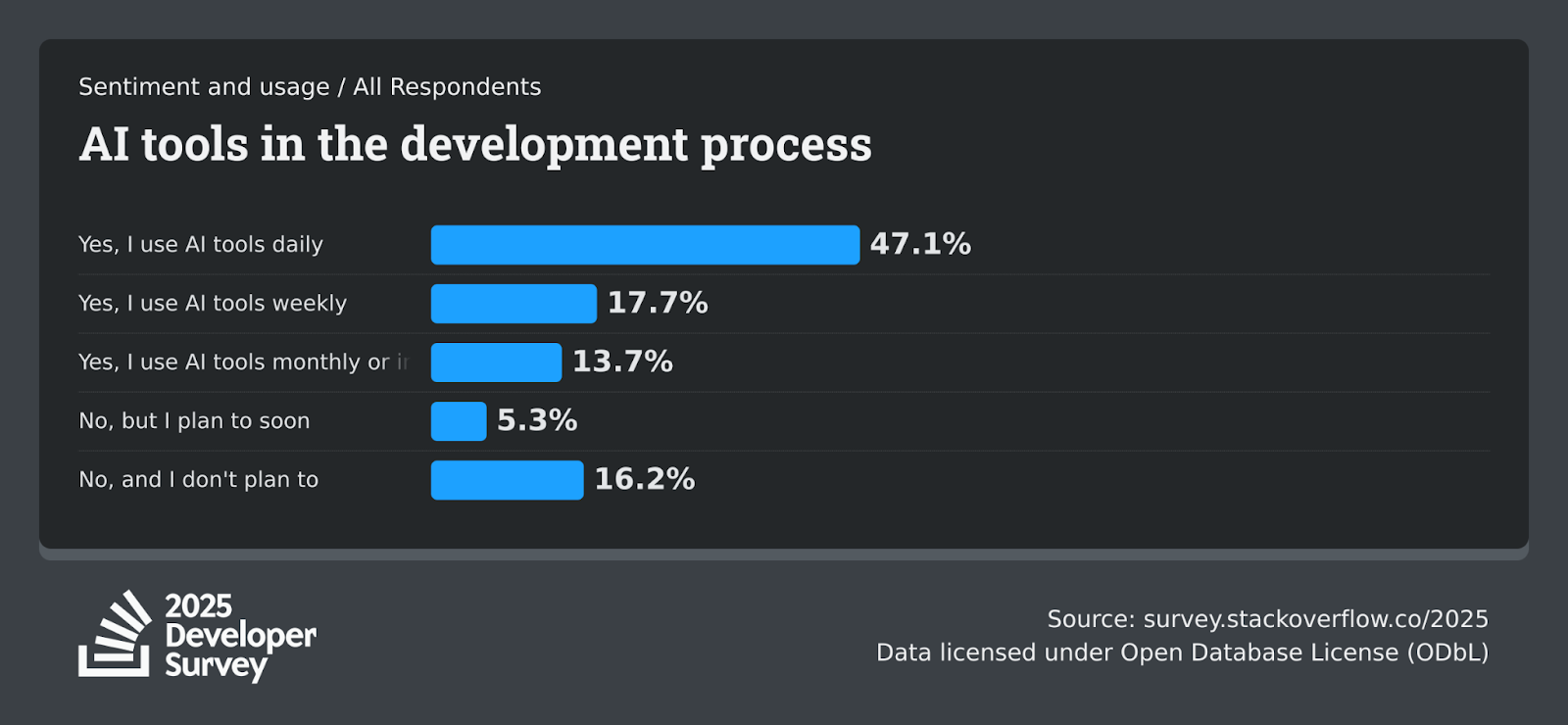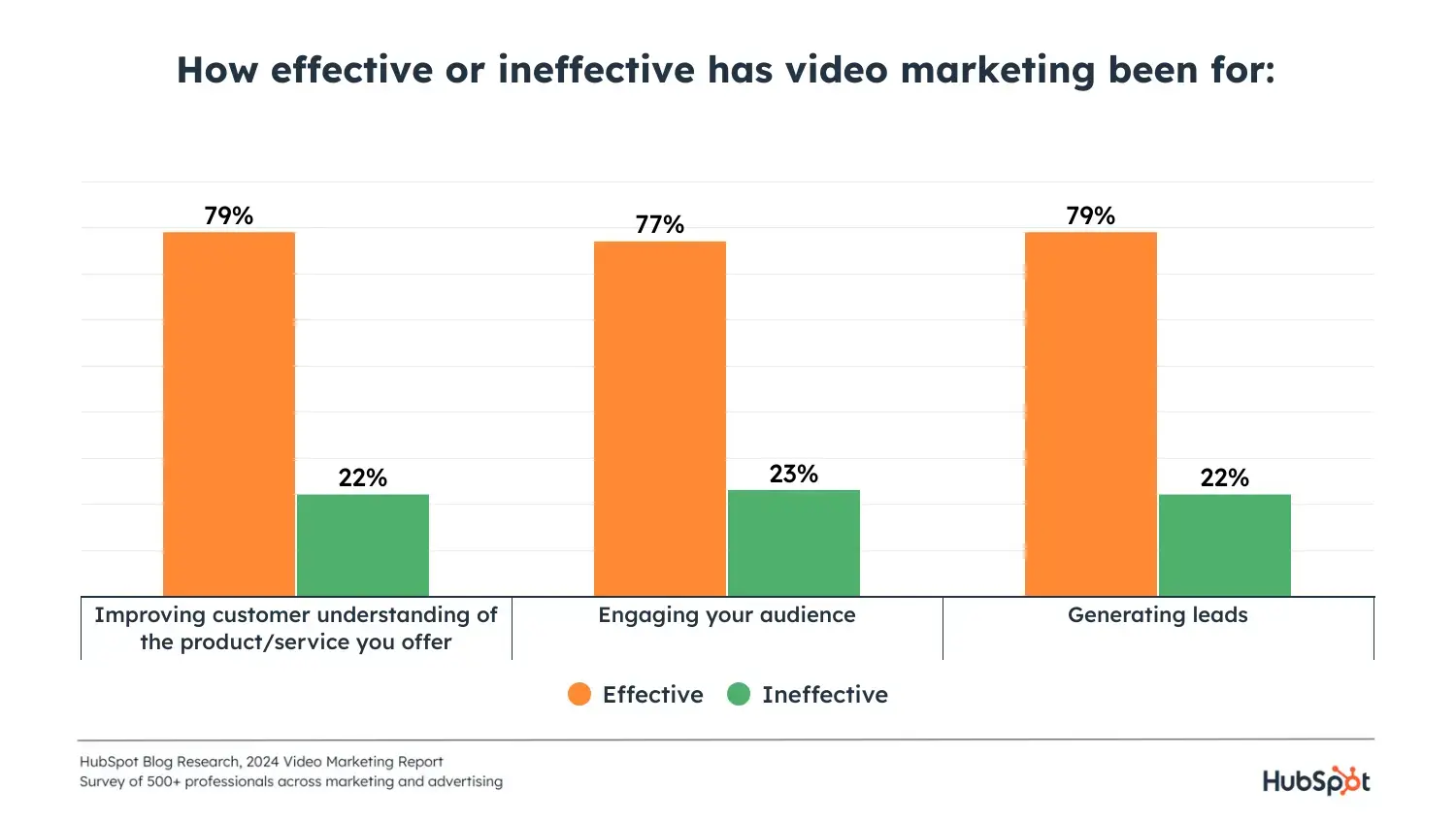Refreshing Developer Content to Maximize AEO/GEO
Developer tools have many challenges when it comes to creating content and leveraging it to drive growth: aligning content strategy with product and go-to-market efforts, maintaining a consistent output of high-quality content, and ensuring their content gets distributed on and off-site.
But one challenge that I don’t hear as many people talking about is the importance of refreshing technical content to keep it up-to-date. In fact, refreshes are one of the biggest opportunities for brands that have been publishing consistently, and they’re a great way to drive awareness without spending a ton of money on new content.
This was true in traditional SEO, but it’s even more true in optimizing content for LLMs (AEO or GEO), as the mainstream models seem to favor newer content. With developers increasingly relying on ChatGPT, Claude, and other AI tools to discover new tools and platforms, it’s getting even more important to keep your content fresh.
Here's the thing though: if you've been publishing solid technical content, you're not starting over. The gap between traditional SEO and what works for LLMs isn't massive. You just need some tactical adjustments to how you approach content updates. Let’s dive into it.

Developers increasingly report daily usage of AI tools. Image courtesy StackOverflow
Why Refreshing Content Matters
One of the easiest ways to improve an existing website is to improve the content that's already there. Because you don't have to start from scratch, you'll spend less time on each piece of content.
Here's what we've learned working on content strategy for developer tools at Draft.dev:
Content decay is real. Nearly 60% of blog posts experience declining traffic within 12-24 months of publication. Your best-performing content from 2-3 years ago is likely underperforming today. Version numbers change, discovery algorithms evolve, competitors publish newer content, and technical details become outdated.
Refreshes outperform new content. We consistently see traffic increases of 200-500% for refreshed content while requiring much less investment than new content creation. Plus, updated content is typically indexed faster by search engines and LLMs.
AI changes everything. Because LLMs tend to favor more recently published or updated content, anyone who’s been publishing for years has to consider refreshes a core part of their content strategy. In my view, this is especially important in developer content where out-of-date information erodes reader trust and leads to bugs and wasted time.
What's Changed With AI-Powered Search
Before I dive into specific tactics, you need to understand a little bit about what matters (and doesn't) seem to matter in this new world of AI-powered developer discovery.
Freshness of ContentAI models favor recently published or updated content. We recommend considering technical content refreshes at least once a year for this reason.
Content StructureFormatting is more important than ever. LLMs aren't as sophisticated at crawling and inferring meaning as mature search engine crawlers, so you should update content to be:
- Skimmable (high-level summaries or bullet points at the top)
- Structured (use tables and matrices for comparisons)
- Self-explaining sections (be aware of chunking)
- Conclusive (key takeaways or FAQs at the bottom)
- Well linked (internally and externally)
Most of these structural points are good for readers and SEO as well, so this is just a win all around.
Schema.org MetadataStructured data helps machines understand your content. Ensuring your website includes simple organization schema, along with FAQ and blog posting schemas, can help your content be better parsed by AI. This requires some technical implementation, but it's worth the effort.
External Brand MentionsIn a world where LLMs train on massive datasets from across the web, brand mentions seem to weigh more heavily than backlinks. This means content mentioning your brand positively across a variety of platforms is key to showing up more often in LLMs, and more practically, it means that you should probably be publishing multiple versions of your content across multiple platforms.
We’ve found that clients getting more mentions in LLMs are publishing on:
- Newsletters that are published online
- Personal, partner, and user blogs
- Dev-focused platforms like Hashnode and Dev.to
- Relevant Reddit comments (not just link drops)
This is a great opportunity for smaller brands to catch up with established players who may have stronger backlink profiles but less focus on external content today.
Comparisons and RoundupsMore than ever, the goal for developer tools should be to guide LLMs towards the category your tool fits into and the specific use cases where it's superior. As developers interact with chat tools and ask progressively more specific questions, you want to make sure your brand is present in those contexts.
This is where direct comparisons ("Us vs. Them") and roundups ("10 Best Tools for X") come in. When refreshing this type of content, it’s important that you feed LLMs the most accurate and up-to-date information so they treat it as authoritative on the topic.
Identifying What Needs Refreshing
With some of the factors above in mind, the next exercise you need to run is to determine which content needs to be refreshed so you can prioritize your efforts accordingly.
Traditionally, we’ve used our clients’ Google Analytics and Search Console data to identify pages with:
- Declining traffic over the past 6-12 months
- Lost rankings for valuable keywords
- High bounce rates or low time on page
- Existing backlinks and domain authority
- Previous strong performance
I think this method still makes sense from an SEO perspective, but it might not be quite as relevant for GEO as it’s still hard to track citations and traffic from LLMs.
So, at this point, you have a few options:
- Use a tool like Scrunch or Airops to identify content that’s not being cited in LLMs as much as you think it should
- Look for any pages on your site that highlight key features, compare your tool to others, or share implementation details and make sure they’re kept up-to-date annually
- Simply make a plan to regularly review and refresh 1-2 pieces of content per week on an ongoing basis
You might think that having a dedicated LLM analytics tool is the way to go, but keep in mind that these tools are still imperfect and making very rough estimates, especially around niche topics. So, depending on the type of content you produce, the volume of output, and your resources available, I think all of these options are viable.

Video content can offer many benefits and potentially help GEO. Image courtesy HubSpot
Best Practices for Refreshing Developer Content
Once you decide on your method for determining which pages deserve a refresh, here are the tactics we use to update older content:
1. Do a Technical Review and Update
This is the most obvious and important step for technical content as software and its best practices are constantly changing. Checking version numbers, re-running your tutorials, and having an engineer review older pieces is one of the best ways to ensure accuracy and relevance.
Some of the most important things to review include:
- Technical accuracy
- Code examples and screenshots
- Statistics and benchmarks
- CTAs and brand messaging
- Dead or broken links
2. Add Rich Media
I’ve seen video and unique visual content improve search engine rankings, and have heard (although there’s still debate on this) that rich media helps with LLM citation rates as well. Either way, having multiple formats for content (video, text, visual) helps the user experience, so if it’s a high-value piece of content, it might be worth investing in.
3. Revisit Formatting and Structured Markup
If you haven’t updated this piece since LLMs became mainstream, I’d recommend looking at the article’s formatting and Schema.org metadata to ensure it’s following best practices. Little things like having a table of contents or some “takeaways” at the end of the article can make a big difference and take very little effort to add.
4. Merge Redundant Content
Another problem we see clients with large content libraries run into is having multiple versions of the same content spread across their website and blog. Sometimes it’s redundant comparison pages or landing pages, and other times, they’ve written four blog posts about the same core topic. Taking a bit of time to merge redundant content and redirect the remaining URLs can help ensure crawlers get a “single source of truth” for each idea on your site, ensuring their information is accurate and consistent.
5. Remove and Redirect Irrelevant Content
There are times when the easiest way to clean up your content is to simply unpublish it. This happens when features are no longer relevant, you end support for certain technology, or the opinions expressed are no longer the ones you hold.
Removing irrelevant or inaccurate content ensures that LLMs are less likely to feed users inaccurate or out of date information. Just make sure you redirect any of the URLs so you don’t lose backlinks or cause an increase in 404 pages.
6. Update Published Dates and Re-Promote
Finally, update the “published date” on each piece and re-promote it across your social and syndication channels if appropriate. A lot of teams miss this, but you’re giving this content a new lease on life, so you might as well increase its chances of getting found by telling people about it.
Results You Can Expect
As of this writing, we’ve worked with clients to update a lot of content, but the results are still variable, leading me to believe that there’s more to learn here. Some consistent trends have emerged though:
Timeline for ResultsMost content should see improvements in search or LLM appearances within 2-4 weeks as search engines recrawl and reindex the updated content. I’ve seen many pieces receive 200-400% traffic and citation increases within the first quarter post-refresh, so again, it’s worth doing for your high-value content.
Comparison to New ContentNew content can take a couple months to mature and start driving traffic, but refreshes often show results in a couple weeks. This depends of course on the volume of LLM/search traffic to the piece, but it makes sense as this content gets the benefit of any existing authority, backlinks, and indexed URLs.
Getting Started With GEO Content Refreshes
If you've already invested in content marketing, you're ahead of the game. AEO/GEO isn't about reinventing the wheel, it's about optimizing your content strategy for the way developers are using AI tools and making decisions today.
So here's what you should do:
- Keep creating high-quality, technically helpful content. The fundamentals haven't changed, you still need to produce content that actually helps developers solve problems.
- Update your content regularly. Especially tutorials and documentation. Aim for at least annual refreshes of your best-performing content.
- Optimize structure and metadata across your content. Make sure your posts are skimmable, well-structured, and include proper schema markup.
- Build brand awareness across multiple platforms. Don't just refresh on your blog. Keep an eye on content syndicated to Dev.to, Medium, and other developer-focused platforms.
- Share with niche newsletters and communities. Re-promote refreshed content and make sure your communities and any relevant newsletters know about the content.
Finally, if you ever have questions about SEO, GEO, or refreshing content in developer tools, reach out to me on Linkedin. I’m happy to help.
Content from the Library
Developer Content in the Age of AI
How is Developer Content Changing in the Age of AI? The cliche “developers hate marketing” suggests they don’t care for...
Platform Builders Ep. #10, Building Leverage, Not Features with Seth Besmertnik
In episode 10 of Platform Builders, Christine Spang and Isaac Nassimi chat with Seth Besmertnik about Conductor's journey through...
A Guide to SEO in the Age of AI, Plus Modern Best Practices
How Will Generative AI Change SEO as We Know It? Search engine optimization, the art of optimizing your startup’s website and...
